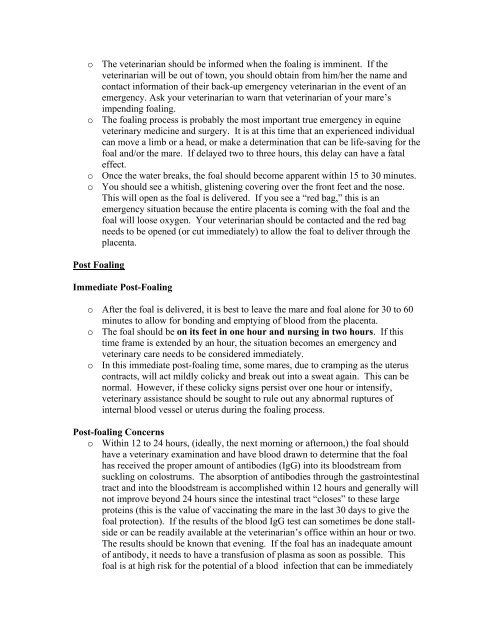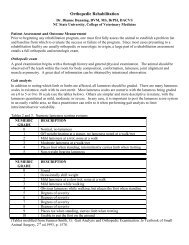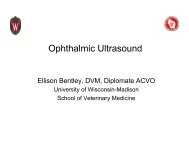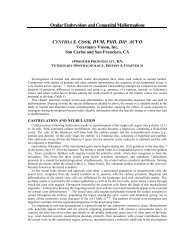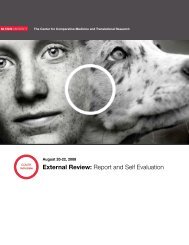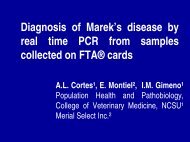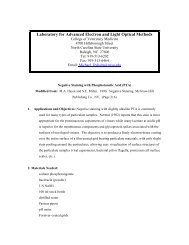Emergency Foaling Issues
Emergency Foaling Issues
Emergency Foaling Issues
Create successful ePaper yourself
Turn your PDF publications into a flip-book with our unique Google optimized e-Paper software.
o The veterinarian should be informed when the foaling is imminent. If theveterinarian will be out of town, you should obtain from him/her the name andcontact information of their back-up emergency veterinarian in the event of anemergency. Ask your veterinarian to warn that veterinarian of your mare’simpending foaling.o The foaling process is probably the most important true emergency in equineveterinary medicine and surgery. It is at this time that an experienced individualcan move a limb or a head, or make a determination that can be life-saving for thefoal and/or the mare. If delayed two to three hours, this delay can have a fataleffect.o Once the water breaks, the foal should become apparent within 15 to 30 minutes.o You should see a whitish, glistening covering over the front feet and the nose.This will open as the foal is delivered. If you see a “red bag,” this is anemergency situation because the entire placenta is coming with the foal and thefoal will loose oxygen. Your veterinarian should be contacted and the red bagneeds to be opened (or cut immediately) to allow the foal to deliver through theplacenta.Post <strong>Foaling</strong>Immediate Post-<strong>Foaling</strong>o After the foal is delivered, it is best to leave the mare and foal alone for 30 to 60minutes to allow for bonding and emptying of blood from the placenta.o The foal should be on its feet in one hour and nursing in two hours. If thistime frame is extended by an hour, the situation becomes an emergency andveterinary care needs to be considered immediately.o In this immediate post-foaling time, some mares, due to cramping as the uteruscontracts, will act mildly colicky and break out into a sweat again. This can benormal. However, if these colicky signs persist over one hour or intensify,veterinary assistance should be sought to rule out any abnormal ruptures ofinternal blood vessel or uterus during the foaling process.Post-foaling Concernso Within 12 to 24 hours, (ideally, the next morning or afternoon,) the foal shouldhave a veterinary examination and have blood drawn to determine that the foalhas received the proper amount of antibodies (IgG) into its bloodstream fromsuckling on colostrums. The absorption of antibodies through the gastrointestinaltract and into the bloodstream is accomplished within 12 hours and generally willnot improve beyond 24 hours since the intestinal tract “closes” to these largeproteins (this is the value of vaccinating the mare in the last 30 days to give thefoal protection). If the results of the blood IgG test can sometimes be done stallsideor can be readily available at the veterinarian’s office within an hour or two.The results should be known that evening. If the foal has an inadequate amountof antibody, it needs to have a transfusion of plasma as soon as possible. Thisfoal is at high risk for the potential of a blood infection that can be immediately


